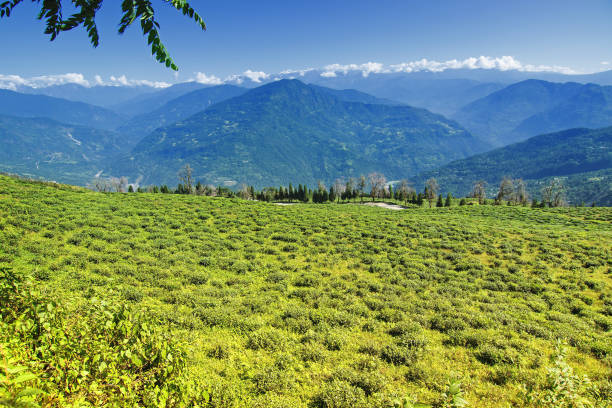Fifty years ago, on this day in 1975, the Kingdom of Sikkim became the 22nd state of the Indian Union. Today, on its golden jubilee, the world is looking up to Sikkim not just as a beautiful Himalayan destination, but as a global pioneer in ecological leadership. As India’s only carbon-negative and fully organic state, Sikkim’s story is not one of quiet evolution — it is one of bold transformation.
This is a story of vision, community resilience, and a bold political will that dared to imagine a future beyond conventional development.
From Kingdom to Climate Champion
When Sikkim joined India, it was a land of monasteries, cardamom fields, and towering peaks — rich in culture but facing the challenges of modernization. But unlike many others, Sikkim chose a different path.
The journey began in 2003 when Sikkim’s government took a radical decision: to phase out chemical fertilizers and pesticides entirely. Many scoffed over the decades, and successive governments and local communities began rethinking what development meant for a fragile Himalayan ecosystem. The answer came in two words: organic and sustainable.
In 2003, Sikkim made a daring pledge to become fully organic. While most of India debated subsidies for chemical fertilizers, Sikkim began phasing them out. It took over a decade of training, policy shifts, and grassroots mobilization, but by 2016, it became the world’s first fully organic state.
The Carbon-Negative Miracle
Sikkim didn’t stop there. With dense forests, clean hydropower, and policies banning single-use plastic and non-organic produce, the state tipped the carbon balance. Today, it absorbs more greenhouse gases than it emits — making it India’s only carbon-negative state. At a time when climate anxiety grips much of the planet, this small state of just over 600,000 people has quietly achieved what many nations struggle to even define.
A People’s Transformation
The real heroes of Sikkim’s transformation are its farmers, youth, and women-led cooperatives. From high-altitude vegetable farms in Lachung to ginger fields in Namchi, traditional practices have found new meaning in an organic economy. Eco-tourism has surged, giving visitors a taste of both sustainability and culture. Young entrepreneurs are now building organic product brands, wellness retreats, and climate education hubs.
At the heart of it all is a belief that development must be rooted in harmony — with nature, culture, and community.
What the Next 50 Years Could Look Like
On this 50th statehood day, Sikkim is not just celebrating its past — it is inspiring India’s future. As the country eyes carbon neutrality and climate-smart agriculture, Sikkim offers a living model of what is possible.
The next chapter may include climate-resilient farming, biodiversity parks, and knowledge-sharing hubs to help other regions replicate the Sikkim model. There is even talk of creating a “Green Himalayan Corridor” — with Sikkim guiding its neighbour neighbour
stainability pathways.
A Himalayan Legacy
Fifty years after it became a state, Sikkim’s identity has evolved from a monarchy to a mountain mission. The New Sikkim is not defined by GDP figures or skyscrapers but by clean air, fertile soil, and resilient communities.
On its golden jubilee, Sikkim stands as a gentle but firm reminder: the future of India — and the planet — may well rest in small states with big visions.

Chief Minister Prem Singh Tamang marked the golden jubilee by reaffirming the government’s commitment to a Sunaulo Sikkim, Samriddha Sikkim, ani Samarth Sikkim — a Golden, Prosperous, and Capable Sikkim. “This vision is deeply aligned with our Prime Minister Narendra Modi ji’s mission of Viksit Bharat,” he said.
“Together, we are building a Sikkim that is forward-looking, inclusive, environmentally conscious, and firmly rooted in our unique identity and values.”
Reflecting on the state’s journey since 1975, Tamang said: “Over the last five decades, Sikkim has emerged as a leader among Indian states — not only as India’s first organic state but also as a model of climate resilience, social harmony, and inclusive development. We take immense pride in having the highest per capita income in the country and being globally recognized for our commitment to the Sustainable Development Goals.”
Looking ahead, he called for collective action and renewed purpose:
“On this golden jubilee of our statehood, I call upon every Sikkimese — from the remote highlands to the bustling towns — to come together with renewed energy to build the Sikkim of our dreams.”
“Let us move forward, hand in hand, to realize the vision of a Viksit Sikkim within a Viksit Bharat.”
Find latest news from every corner of Northeast India at hubnetwork.in, your online source for breaking news, video coverage.
Also, Follow us on-
Twitter-twitter.com/nemediahub
Youtube channel- www.youtube.com/@NortheastMediaHub2020
Instagram- www.instagram.com/ne_media_hub
Download our app from playstore – Northeast Media Hub





